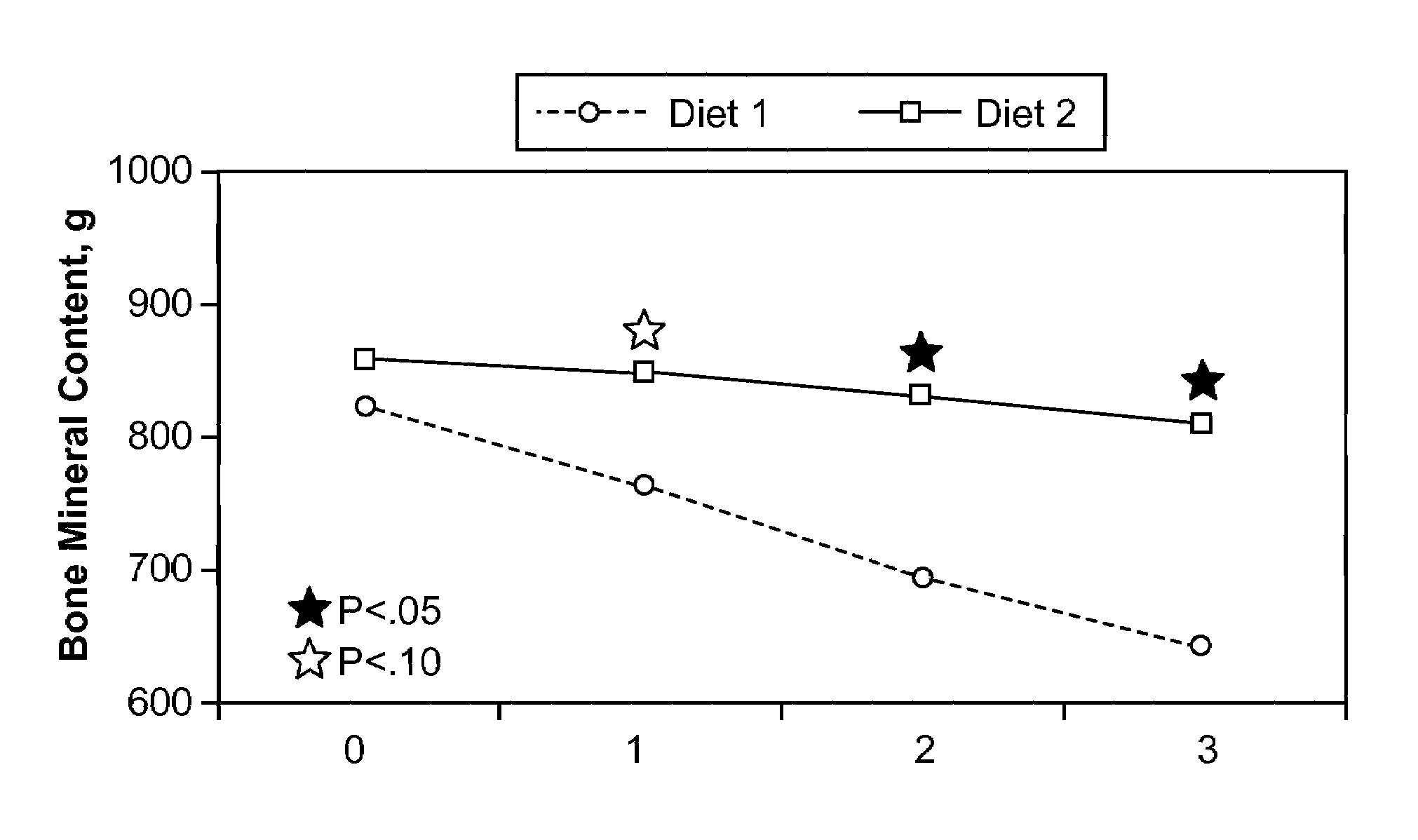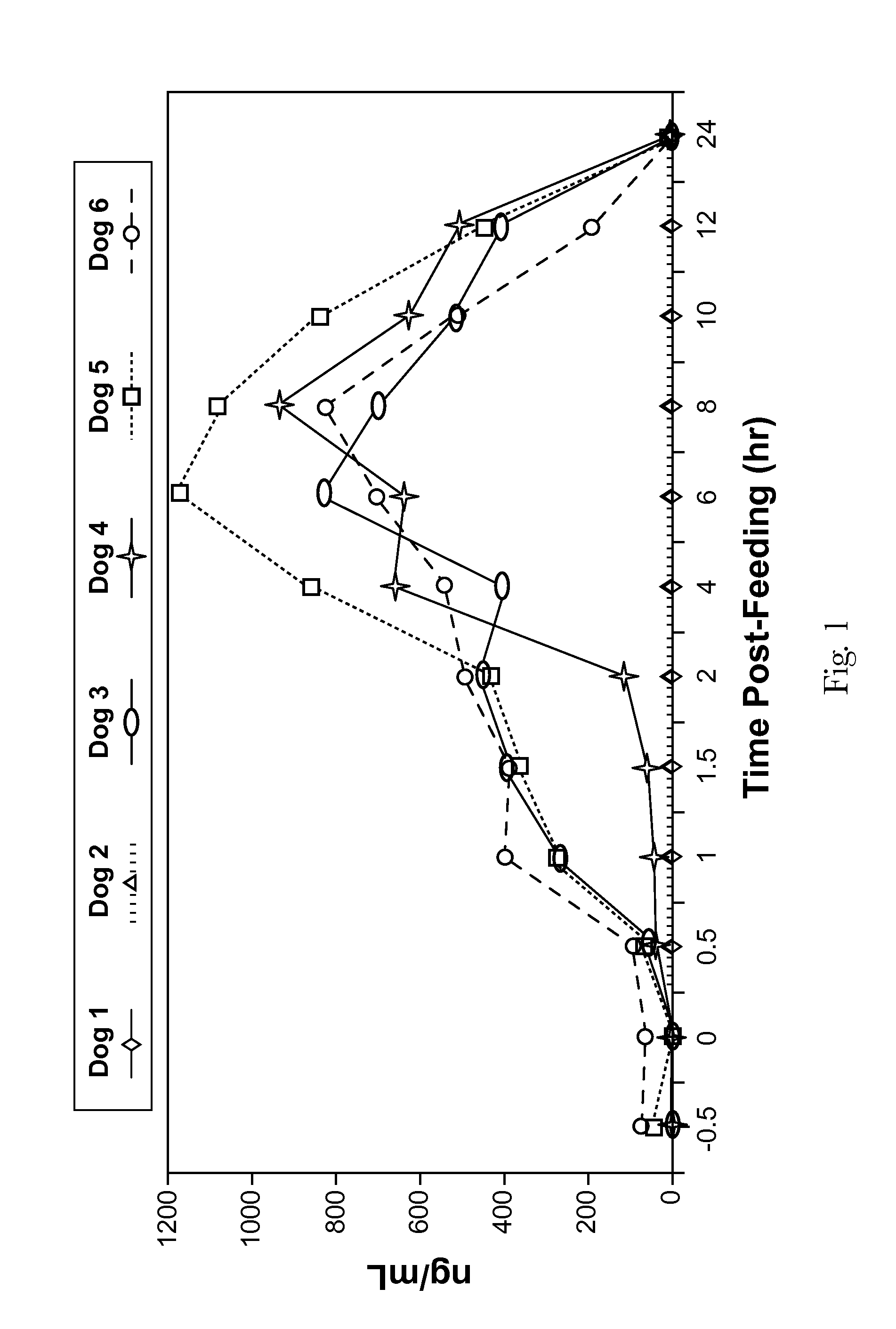Mimicking the metabolic effects of caloric restriction by administration of glucose Anti-metabolites
a technology of anti-metabolites and metabolic effects, applied in the direction of biocide, drug composition, metabolic disorder, etc., to achieve the effect of blocking cell utilization of both glucose and fructose, preventing utilization of glucose as energy source, and non-reducing character
- Summary
- Abstract
- Description
- Claims
- Application Information
AI Technical Summary
Benefits of technology
Problems solved by technology
Method used
Image
Examples
example 1
Preparation of Mannoheptulose-Containing Avocado Meal
[0069]Fresh avocados (Lula variety) were obtained from Fresh King Incorporated (Homestead, Fla.). The avocados were manually split open and the pits were removed and discarded. The remaining skin and pulp were ground through a Hobart Commercial Food Preparation machine (Serial No. 11-10410235) using a 12¼ sieve. The ground avocado was then transferred to an Edwards Freeze Drier (Super Modulyo Model, Crawely, Sussex, England). The freeze drier was set at −20° C. for the first 24 hours, −5° C. for the following 24 hours and 5° C. for the final 72 hours. Upon removal from the freeze drier, the meal was ground to a powder using a Straub Grinding Mill (model 4E, Philadelphia, Pa.). The avocado meal was analyzed and found to contain about 10.35% mannoheptulose, by weight of the meal. It should be noted that the amount of mannoheptulose found in avocados varies with the particular strain and state of ripeness, some avocados having little...
example 2
Administration of Mannoheptulose-Containing Avocado Meal to Beagle Dogs
[0070]The use of mannoheptulose for purposes of maintaining and or attenuating a decline in the health, functional activity, and / or biomarkers of longevity as a result of mimicking caloric restriction was tested in beagle dogs through measurement of insulin reduction. As has been discussed, and is now widely accepted in the art, insulin reduction is a hallmark of caloric restriction and therefore a suitable indicator and / or biomarker.
[0071]A total of 12 beagles were utilized for the study and were fed a standard commercial composition (Eukanuba Senior Maintenance Formula) through the study period. Fasting blood samples were drawn 7, 6, 4, and 2 days prior to administration of mannoheptulose. The mannoheptulose was delivered to the dogs in the form of a freeze-dried avocado meal containing from about 10% to about 12% mannoheptulose, by weight of the meal. This preparation was adjusted to provide mannoheptulose dos...
example 3
Avocado Extract Containing Enhanced Levels of Mannoheptulose is Prepared in Accordance with the Following Optional Process, and Utilized in Compositions of the Present Invention
[0074]Whole avocado fruit (about 900 kilograms) is provided. The fruit is split and the pits are removed, either partially or wholly, providing about 225 kilograms of pitted avocado halves. The raw avocado is charged to a disintegrator, whereupon some agitation, water (about 3000 kilograms) and CELLUBRIX (commercially available from Novozymes A / S) (about 1 liter) is further charged. The mixture is further agitated and concurrently heated to about 66° C. Upon completion of the charge, further CELLUBRIX (about 1 liter) is added, and the entire mixture is held under agitation for about 12 hours at a controlled pH of about 5.5. The temperature is then further increased to about 80° C. and then held for at least about 2 hours. The resulting digested plant mixture is then filtered at 80° C. to provide the carbohydr...
PUM
| Property | Measurement | Unit |
|---|---|---|
| temperature | aaaaa | aaaaa |
| body weight | aaaaa | aaaaa |
| body weight | aaaaa | aaaaa |
Abstract
Description
Claims
Application Information
 Login to View More
Login to View More - R&D
- Intellectual Property
- Life Sciences
- Materials
- Tech Scout
- Unparalleled Data Quality
- Higher Quality Content
- 60% Fewer Hallucinations
Browse by: Latest US Patents, China's latest patents, Technical Efficacy Thesaurus, Application Domain, Technology Topic, Popular Technical Reports.
© 2025 PatSnap. All rights reserved.Legal|Privacy policy|Modern Slavery Act Transparency Statement|Sitemap|About US| Contact US: help@patsnap.com



